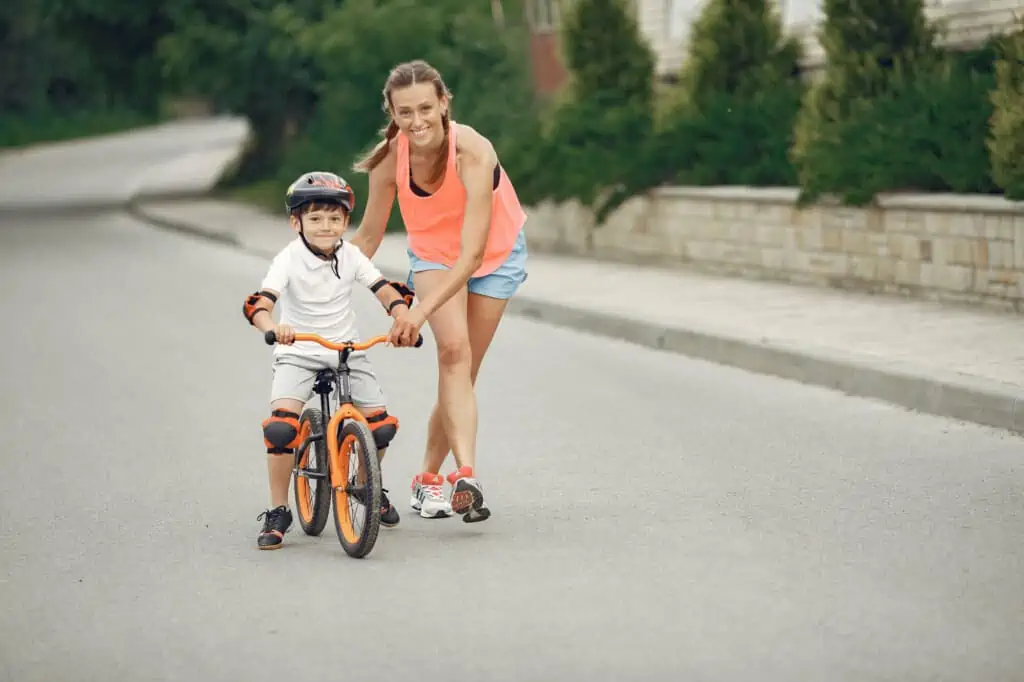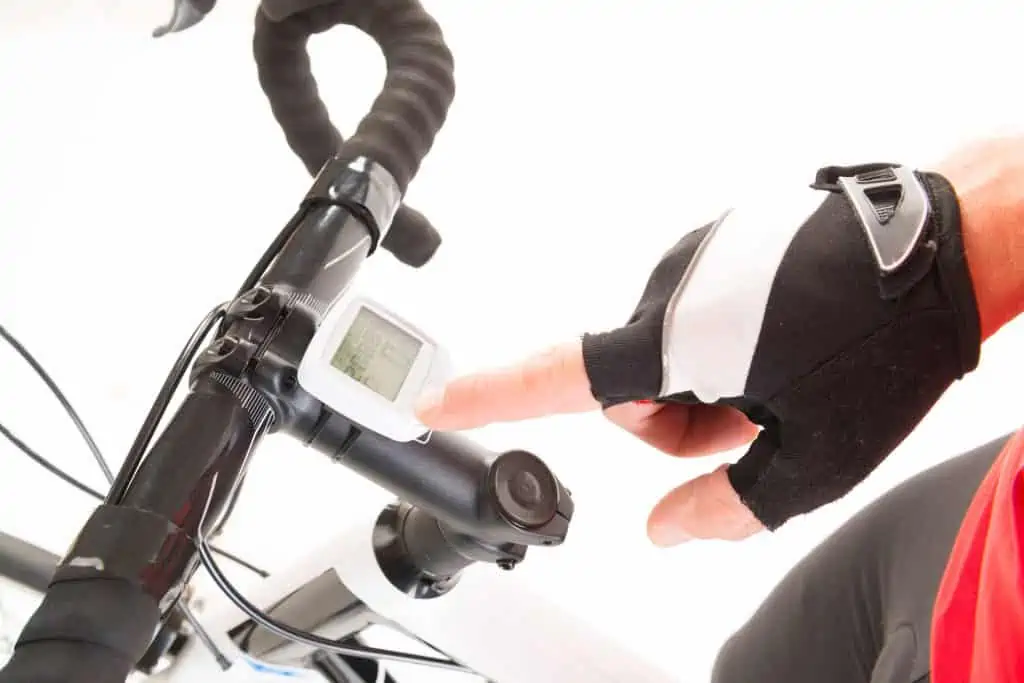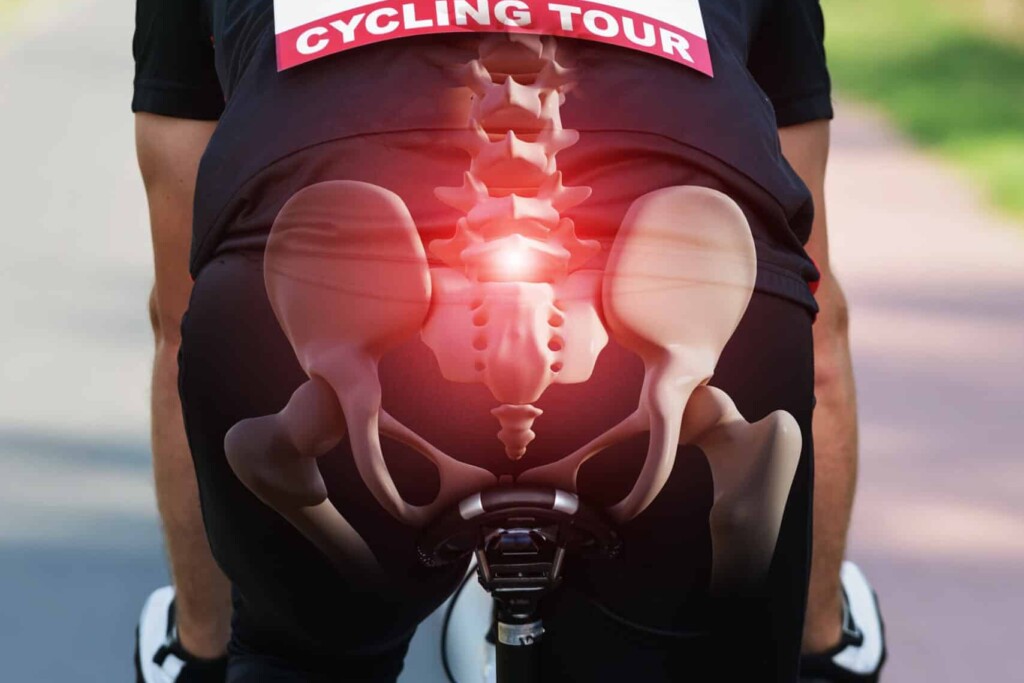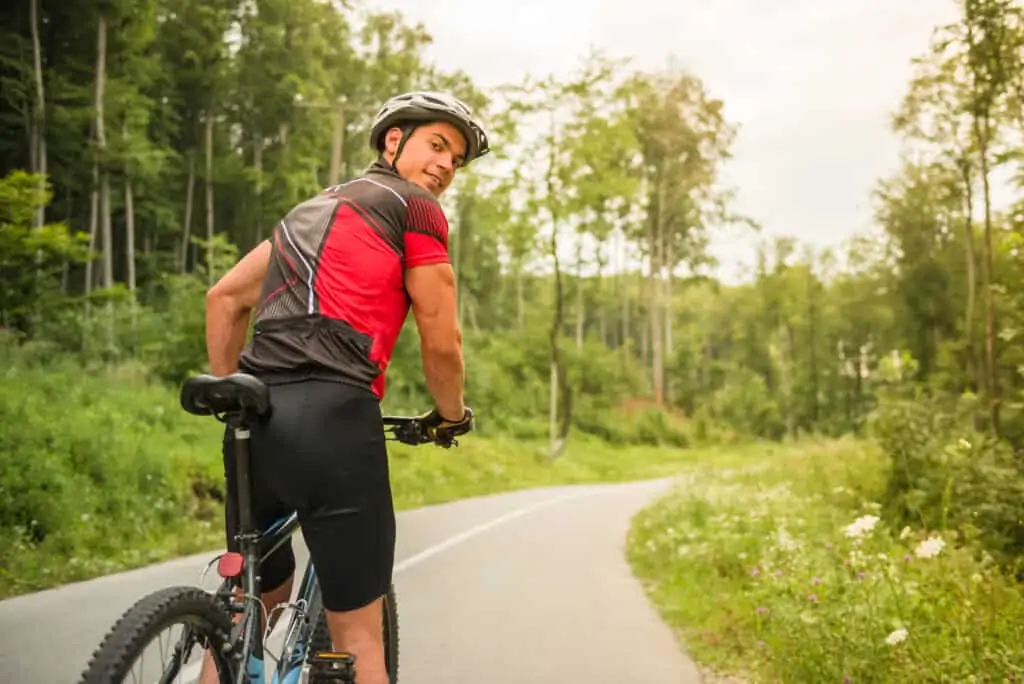Teaching your kid to ride their first bike is a HUGE milestone, and you need to give your full attention to your child. Your job is to motivate them to start riding their bike and show them how. Some kids required help for the whole process, while some only need help understanding how this whole cycling-thing actually works.
In this article, I’ll give you mine (and my friends’) best tips on how to teach a kid to ride a bike and become an inspired cyclist – if you know what I mean 🙂
How to Teach a Kid to Ride a Bike – First Steps

When you start teaching your kid to ride a bike, it is always recommended that you start with a balanced bike, even if they’re two and a half years old or eight years old because these bikes are much easier to handle and your kid starts their training on these bikes from 18 months.
P.S. in our article about best bikes for kids, I have an example of a balance bike that can have pedals added later – that way you’re getting two birds with one stone as you don’t need to spend money on two bikes – an option to consider!
1. Start With Stabilizer
If you start (and trust me, the better you’re prepared to do it, the better the experience will be both for you and your kid) teaching your kid with a stabilizer, it means they can quickly get used to staying upright without having to balance. This means they’ve learned the whole balancing technique from scratch – this is good not only for cycling but for overall development (but please note that I am not a child development professional).
If you get your kid into this ability to maintain the good balance at a very young age, then it will be easier to start with cycling. Teaching a kid, who knows how to keep the balance, how to control or speed up and slow down their bikes is simply inevitable!
2. Secure Your Kid While Teaching Them How to Ride a Bike
Once you’ve got your child set up on the bike, you’ve made sure their feet can go flat on the floor, they’re pretty confident, and it’s time to set them off. So, find a flat bit of either tarmac or soft grass but not too weak because you want to ensure that the wheels are allowed to move around, then go along with them.
Just help them support underneath their arms so you can grab them if they start to lose balance but never hold on to the handlebars because they need to get the feel of them, which will help them balance.
It is essential to remember your child needs to enjoy the experience. If they don’t want to do it or get visibly tired, it’s time to give it to them and return to it another time.
3. Let Your Kid Try To Cycle On His / Her Own
Once you feel that your kid started to get more comfortable and confident on the bike, then it’s time to let them go on their own. Don’t do anything too drastic like significant downhills, but if you get some very slight gradual declines, or a flat one (better in my opinion), they’re going to start to get a little bit speed up, and that’s the point that potentially they can begin to lift their feet off the ground. This will be a perfect time they can handle themselves and enjoy their bike ride. Without you “holding their hand” but being close enough to help in case of any troubles!
How Difficult It Is To Teach a Kid To Ride a Bike?
Everyone needs practice, especially kids, when they’re getting into something new, like riding a bike.
Most kids learned how to ride a bike with training wheels which is not a good option to start with (this is my opinion and I am getting same feedback from some of my friends – their kids seem to do much better by mastering a balance bike and then getting pedals without the “transition” phase with training wheels). There is no exact amount of time a kid takes to learn a skill like bike riding, as every child is different and has various types of understanding. It can take approximately 45 minutes or up to a couple of weeks to educate a child to ride a bike.
The time of learning varies from child to child, and it also depends upon their age, how fun bikes are for them, how well they maintain their balance, and previous experience with riding on or balancing toys. The essential part of teaching your child to ride a bike is patience. Let your child learn and enjoy riding a bike.
What Is The Ideal Age to Teach A Kid to Ride a Bike?
Learning how to ride a bike is an essential milestone in your child’s development (there might be kids who hate bikes from the very beginning but I have not one yet). Most children will be ready and want to learn between the ages of two and eight but to ride a bike, the best age is four and above.
The process of learning requires various stages, and some children may start learning even earlier and only need some guidance to create a paddle. If you listen to parents who started teaching their kids with Woom Bikes, they’ll tell you even 2 y.o. learn in 20 minutes.
The timings also depend upon the child’s physical and mental development, coordination, and comfort level. The teaching method of removing the pedal of your child’s bike allows them to concentrate on getting information to balance on two wheels, which is an essential skill in learning to ride.
By age four, a child is ready to follow instructions and has developed the natural balance, agility, and physical leg power needed to ride a bike. All children are different and learn in their own space. Therefore, you can’t guess at what age your kid starts riding a bike professionally. And I cannot stress this more – I am not an expert in child development, simply sharing my and my friends’ experience.
My Best Tips On How To Teach a Kid to Ride a Bike
Flat Feet
You should make sure a child can touch the ground with their feet flat while sitting on a bike. This will allow your kids to push themselves off the ground to acquire momentum and quickly stop and start the cycle safely and independently. Also to bring their balance back, if needed.
Low Saddle
The saddle should be as low as possible. Because if your kid can only touch the ground with their tiptoes, the whole learning process will be more complicated. If your kid cannot safely place their feet on the ground, they can get scared of the whole cycling thing. So best to keep the saddle low at the beginning. You can remove the rear reflector from the seat post so your child can easily reach the ground.
Lightweight Bike
The lighter, the better. Lightweight bikes are straightforward to balance, and the child can handle them independently. Heavier pedal bikes make it challenging to handle. Therefore, when buying the first bike, really look at the weight, not
Patience
The most important tip is to be patient. Your child will take some time to become the master of riding a bike. You should give your child time, confidence, and motivation and make sure that they practice riding a bike at least once a day because practice makes perfect. So patience, patience and practice!
Use a Helmet
As always, safety first! So make sure your kid always wears a helmet (properly selected – we have a guide on how to choose the right helmet here). A helmet will save your child from many unfortunate incidents and help them to feel more protected – and trust me, at the beginning those “accidents” will happen a lot.
Balance Bike or Training Wheels? Which Option is Better?
We stand behind balance bikes. And against training wheels. The most important thing to learn is how to maintain the balance. And this is exactly what balance bike does. This skill btw, is not only key for cycling but for many other activities and sports.
5 Reasons Why Balance Bikes Are Better Than Training Wheels
1. Balance bikes fit kids better
Balance bikes fit young kids much better than 12-inch bikes with training wheels. Ironically most kid’s bikes with training wheels are made to fit kids, and balance bikes are smaller, lighter, more narrow, and work for small children much better.
Balance bikes have a lower minimum seat height and go down as low as 10 inches off the ground. The average 12-inch bike, the smallest paddle bike available, has a minimum seat height of 17 inches. Therefore, toddlers can not ride the bike comfortably, and it is difficult for them to handle it.
2. Your Kid Can Safely Move Even If Uneven Terrain
Riding a training wheel is an awkward experience. A child can only go fast and can’t execute turns very well because training wheels keep them slightly off balance. It is an embracing and challenging ride because the small plastic training wheel can quickly get imbalanced on uneven surfaces. Training wheels limit a child to riding up and down the street.
Compared to training wheels, a balanced bike ride is relatively easy for a child to handle independently on any surface. Flat bikes can also tackle dirt tracks with ease. So if the terrain is not great, the kid can simply ride away.
3. Lightweight and Easy to Ride
Balanced bikes are light and easy to ride. Kids can ride them with ease. Furthermore, these bikes are so much lighter than bikes with training wheels. They are typically half the weight of the training wheels. Being significantly lighter, kids can easily ride them much further and enjoy their ride. Kids on balanced bikes can easily ride for a longer distance with their families and do not feel tired at any stage.
4. Kids Can Ride Independently Faster
Balanced bikes are often used for fun and independent riding. Toddlers typically can ride a paddle bike comfortably at 3 years old, but they can start to explore a balanced bike at 18 months. By age 3, most balanced bike riders can essentially ride their flat bikes anywhere.
Learning to ride a balanced bike is a natural process for kids, and their first experience with the cycle is Independence, but with training wheels, kids need help to start, and they are also very limited in how to ride them. Want to have an independent and confident little cyclist – start from balance bike, don’t even try training wheels.
5. You will never be in need of training wheels
Balanced bike riders will never need training wheels. Transitioning to a paddle bike is easy because riding a flat bike doesn’t require any trainer to teach the child, but while riding a training wheel, every kid needs to be well-trained before going on their first ride. Training wheels often stop a kid’s development because they always need someone to handle them.
Figuring Out How to Teach a Kid to Ride a Bike Can Be Really Fun (For Kid and For You)
Learning to ride a bike should always be fun for your kid. They should enjoy every bit of it because they want to learn how to ride a bike properly. Riding is a skill that is an excellent way of exercising and also helps to build confidence in your child.
Always keep things fun and avoid building pressure on your kids to master the ride immediately. Just make sure to give them some time and teach them in a friendly way. When you let your kid learn at their own pace, they will surely enjoy the process and pick things more easily.
How to Make Your Kid a Confident Little Cyclist?
Riding a bike is not easy, and everyone requires some training to start learning. Therefore, when you teach your kid to ride a motorcycle, always make them comfortable and motivate them by every means.
You can start by explaining to them how, to begin with, paddle and build their balance while riding. Remember to explain to them the rules and the vital thing to carry while riding: a helmet. Don’t build pressure on them. Just give them confidence that they can do it.
Always remember their first ride should be fun and stay within the time for teaching to ride a bike for more than one hour.
Summary of My Best Tips on How to Teach a Kid to Ride a Bike
- Boost your child with success which helps the child build confidence.
- Be gentle and patient, and don’t try to force the process: Your child may not be pedaling right away, but with everyday practice, they’ll get it. Take a rest and come back to it. Refrain from pressurizing them.
- Pay excellent attention to signs when you should stop and rest.
- Remember that every child learns differently and may respond better to some methods. Learn what works and adapt as needed.
- Remember to make things easier for them.
- Above all, keep it fun.
In Conclusion – Educating your kid on how to ride a bike is not easy, but it is 100% possible and can be really fun. Try to start with a balanced bike instead of training wheels because they are much better and easy to handle. Be patient, and make the whole learning process filled with fun and enjoyment.
Enjoy!



Pingback: Best Bikes For Boys and Girls That Make Kids Smile & Play - inspiredcyclist